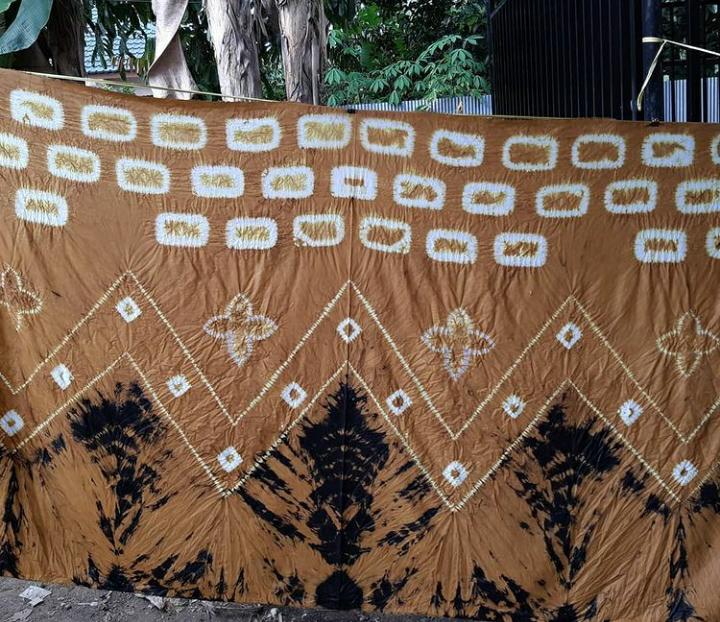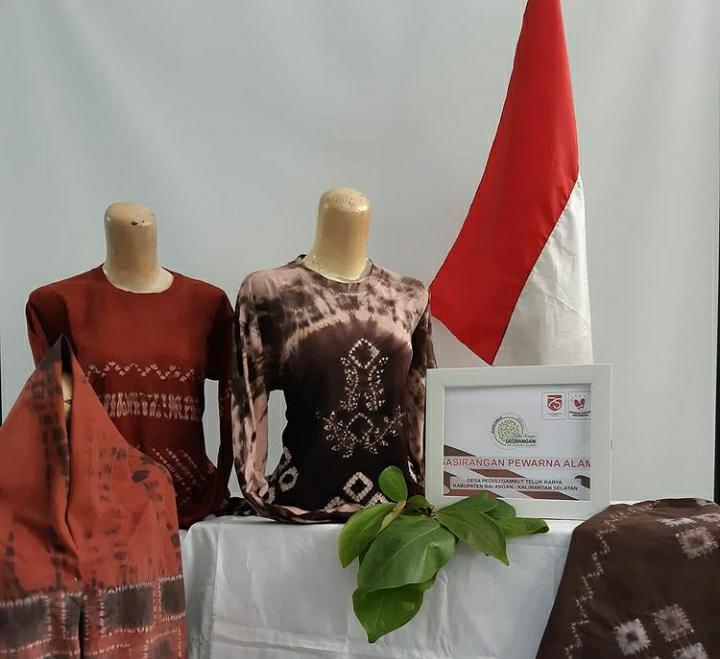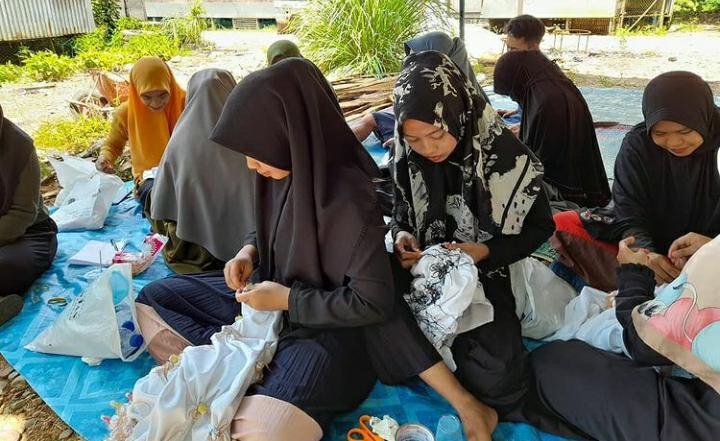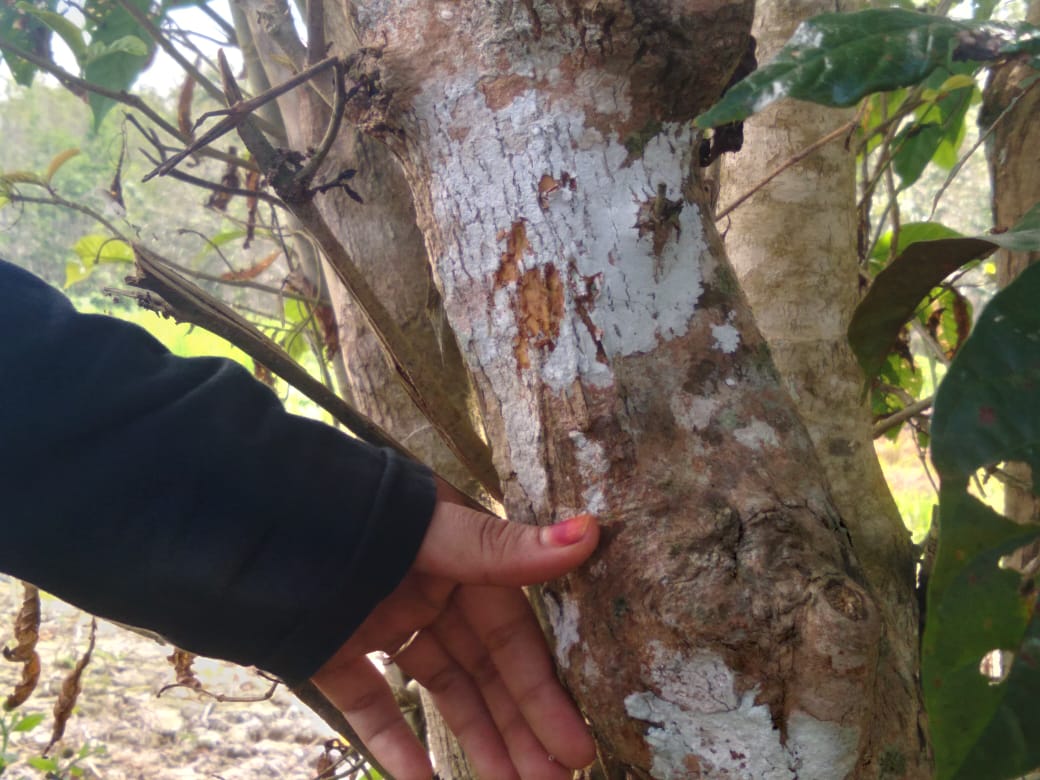Indonesia's Deforestation Dropped 60 Percent in 2017, but There's More to Do
By Hidayah H, Reidinar J, Nirarta S and Arief WThe Story of Sasirangan Fabric Artisans in Teluk Karya Who Use Peat Plants as Natural Dyes
Under the hot morning sun, Laila Hayati and four of her friends were walking on the peatland in Teluk Karya Village, Lampihong Subdistrict, Balangan District, South Kalimantan Province.
Rice and various trees such as rubber and rambai are planted on the 111.90 hectares of peatland located about 250 meters from the village center. But in that morning, Laila and her friends invited Pantau Gambut to see their source of livelihood, which is the plants they use as raw materials for natural dyes on the Sasirangan fabric.
Sasirangan is a typical South Kalimantan fabric drawn with various motifs and patterns inspired by the Banjar people's cultural values. The fabric is soaked using natural dyes and sewn with a basting stitch technique into shirts, t-shirts, pants, and scarves.
Along the way, Laila tirelessly told us about plants that people of Teluk Karya used to make natural dyes.
"This one is a bangkal tree. We usually use the trunks for their natural yellow color," said Laila while showing the tree.
The bark of bangkal tree is brown and the inner trunk is cream, but when boiled and processed into a paste, they will turn into the yellow color commonly used in Sasirangan fabrics.
Besides bangkal trees, Laila said that galam, a typical peat plant, is also used as natural grey dyes.
"Some plants can be taken from pulau (the local name for ‘peatland’) but we need to order some others from the market in Java because they are not available here," she added.
For the past year, Teluk Karya youths have developed Sasirangan handicrafts with natural dyes made from peat plants. They are members of the Aneka Karya Sasirangan group which has a total of 20 members.
Seize the Opportunity
The idea of making handicrafts was initiated in the government's empowerment program around June 2020, which was then continued by the local residents independently.
Laila said that the program has brought great benefits. It encourages the local youths to be more independent economically by utilizing the peat plants that have been growing wild around them.
Recently, local residents have managed to build a gallery near the village office as a showroom to sell Sasirangan fabric products with natural dyes. The 4x4 meter gallery also serves as a training center for youths who are members of the Aneka Karya Sasirangan group.
The youths of Teluk Karya Village also generously share their knowledge with residents in other villages. For example, in early June 2021, they completed a Sasirangan natural dye training in Tatakan Village, South Tapin Subdistrict, Tapin District, South Kalimantan Province, whose land is also dominated by peatland.
For market access, these youths already have a network to district government offices as the main selling platform for their fabrics. To reach beyond the local market, they have also used social media such as Instagram and Whatsapp to sell their products to potential consumers in other regions.
"There is no funding assistance, but the government helps us with marketing, for example by asking all government agencies to use our products. They also asked us to provide data on all artisan members and their production capabilities,” said Laila.
"The average price for one fabric is IDR 200,000. The price can be higher for finished fashion products," she added.
They charge a higher price range for their environmentally friendly products because they do not use any chemicals.
"We have learned to use synthetic dyes but some friends got an itchy rash because of it. Maybe because they have sensitive skin and are allergic to synthetic dyes," said Laila.
She added that the use of natural dyes also has its own bargaining value because the export market has recently become more interested in natural dyes. "Of course we want to export our products. We are slowly getting there. But we started from selling in the local area first,” she said.
Just for the record, some countries such as Germany, the Netherlands, the USA, and England have begun to prohibit the use of synthetic dyes because the liquid waste potentially causes skin cancer and several other generative diseases.
This prohibition is in line with the result of the Geneva Conference on 20-23 June 1995 which was attended by Indonesia. The conference participants agreed to recommend the ban on sale and purchase of textiles and textile products that use synthetic dyes.
"There is an opportunity for us there. So step by step. We'll start doing it one by one," she continued.
Future Challenges
Even though they have natural wealth in the form of hundreds of hectares of peatlands, Teluk Karya residents, especially the Sasirangan artisans, still have challenges ahead because the peatlands in their village are vulnerable to fires.
For example, fires occurred in Teluk Karya for three consecutive months in 2019, which burned 7.80 hectares of land in July, 26.84 hectares in August, and 26.46 hectares in September.
From the notes of M Ikhsan, a facilitator in Teluk Karya Village, the fires have resulted in the reduction of peat plants such as galam and bangkal.
People claimed that the fires were not due to mismanagement of lands in the local area. However, Teluk Karya is often affected by forest and land fires that occur in neighboring areas.
Another challenge is the distance between the main peatlands from settlements, so that the artisans choose to utilize the plants around the village office.
"It is 20 minutes from the village center by car or motorbike, so the access is relatively more limited. That's why people only use part of the peatlands near the village office," he said.
On the other hand, the artisans also hope to improve their skills in graphic design, marketing strategies, and photography so that they can make their products more attractive to potential consumers.







